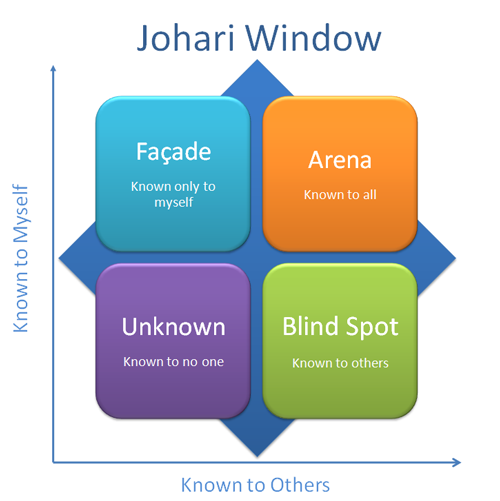Note: This site is moving to KnowledgeJump.com. Please reset your bookmark.
Communication and Leadership
No one would talk much in society if they knew how often they misunderstood others. — Johann Wolfgang Von Goethe

Communication is the exchange and flow of information and ideas from one person to another; it involves a sender transmitting an idea, information, or feeling to a receiver (U.S. Army, 1983). Effective communication occurs only if the receiver understands the exact information or idea that the sender intended to transmit. Many of the problems that occur in an organization are (Mistry, Jaggers, Lodge, Alton, Mericle, Frush, Meliones, 2008):
- the direct result of people failing to communicate
- processes that leads to confusion and can cause good plans to fail
Studying the communication process is important because you coach, coordinate, counsel, evaluate, and supervise throughout this process. It is the chain of understanding that integrates the members of an organization from top to bottom, bottom to top, and side-to-side.
The Communication Process
Communicating with others involves three primary steps:
- Thought: First, information exists in the mind of the sender, such as a concept, idea, information, or feelings.
- Encoding: Next, a message is sent to a receiver in words or other symbols.
- Decoding: Lastly, the receiver translates the words or symbols into a concept or information that he or she can understand.
During the transmitting of the message, two elements will be received: content and context. Content is the actual words or symbols of the message that is known as language — the spoken and written words combined into phrases that make grammatical and semantic sense.
We all use and interpret the meanings of words differently, so even simple messages can be misunderstood. And many words have different meanings to confuse the issue even more.
Context is the way the message is delivered and is known as paralanguage — it is the nonverbal elements in speech such as the tone of voice, the look in the sender's eyes, body language, hand gestures, and state of emotions (anger, fear, uncertainty, confidence, etc.) that can be detected. Although paralanguage or context often cause messages to be misunderstood as we believe what we see more than what we hear; they are powerful communicators that help us to understand each other. Indeed, we often trust the accuracy of nonverbal behaviors more than verbal behaviors.
Some leaders think they have communicated once they told someone to do something, “I don't know why it did not get done. I told Jim to do it.” More than likely, Jim misunderstood the message. A message has NOT been communicated unless it is understood by the receiver (decoded). How do you know it has been properly received? By two-way communication or feedback. This feedback tells the sender that the receiver understood the message, its level of importance, and what must be done with it. Communication is an exchange, not a give, as all parties must participate to complete the information exchange.
Barriers to Communication
Nothing is so simple that it cannot be misunderstood. — Freeman Teague, Jr.
Anything that prevents understanding of the message is a barrier to communication. Many physical and psychological barriers exist:
-
Culture, background, and bias — We allow our experiences to change the meaning of the message. Our culture, background, and bias can be good as they allow us to use our past experiences to understand something new, it is when they change the meaning of the message that they interfere with the communication process.
-
Noise — Equipment or environmental noise impedes clear communication. The sender and the receiver must both be able to concentrate on the messages being sent to each other.
-
Ourselves — Focusing on ourselves, rather than the other person can lead to confusion and conflict. The “Me Generation” must be tossed aside for effective communication to occur. Some of the factors that cause this are defensiveness (we feel someone is attacking us), superiority (we feel we know more that the other), and ego (we feel we are the center of the activity).
-
Perception — If we feel the person is talking too fast, not fluently, does not articulate clearly, etc., we may dismiss the person. Also our preconceived attitudes affect our ability to listen. We may listen uncritically to persons of high status and dismiss those of low status.
-
Message — Distractions happen when we focus on the facts, rather than the idea being communicated. Our educational institutions reinforce this with tests and questions. Semantic distractions occur when a word is used differently than you prefer. For example, the word chairman instead of chairperson, may cause you to focus on the word rather than the message.
-
Environmental — Bright lights, an attractive person, unusual sights, or any other stimulus provides a potential distraction.
-
Smothering — We take it for granted that the impulse to send useful information is automatic. Not true! Too often we believe that certain information has no value to others or they are already aware of the facts.
-
Stress — People do not see things the same way when under stress. What we see and believe at a given moment is influenced by our psychological frames of references, such as our beliefs, values, knowledge, experiences, or goals.

These barriers can be thought of as filters, that is, the message leaves the sender, goes through the above filters, and is then heard by the receiver. These filters may muffle the message. And the way to overcome filters is through active listening and feedback.
Active Listening
Hearing and listening are not the same thing. Hearing is the act of perceiving sound. It is involuntary and simply refers to the reception of aural stimuli. Listening is a selective activity that involves the reception and the interpretation of aural stimuli. It involves decoding the sound into meaning.
Listening is divided into two main categories: passive and active. Passive listening is little more that hearing. It occurs when the receiver of the message has little motivation to listen carefully, such as we often do when listening to music, television, or when being polite.
People speak at 100 to 175 words per minute (WPM), but they can listen intelligently at 600 to 800 WPM. Since only a part of our mind is paying attention, it is easy to go into mind drift—thinking about other things while listening to someone.
The cure for this is active listening—which involves listening with a purpose. It may be to gain information, obtain directions, understand others, solve problems, share interest, see how another person feels, or show support. It requires that the listener attends to the words and the feelings of the sender for understanding. It requires the receiver to hear the various messages, understand the meaning, and then verify the meaning by offering feedback. It takes the same amount or more energy than speaking. The following are some of the traits of active listeners:
-
Spends more time listening than talking.
-
Does not finish the sentences of others.
-
Does not answer questions with questions.
-
They are aware of biases. We all have them. We need to control them.
-
Never daydreams or become preoccupied with their own thoughts when others talk.
-
Lets the other speakers speak and does not dominate the conversation.
-
Plans responses after others have finished speaking, NOT while they are speaking.
-
Provides feedback, but does not interrupt incessantly.
-
Analyzes the conversation by looking at all the relevant factors and asking open-ended questions. Walks others through by summarizing.
-
Keeps the conversation on tract by focusing on what others say, NOT on what interests them.
-
Take brief notes as needed to help them concentrate on what is being said.
Feedback
When you know something, say what you know. When you don't know something, say that you don't know. That is knowledge. — Kung Fu Tzu (Confucius)
The purpose of feedback is to alter messages so the intention of the original communicator is understood by the second communicator. It includes verbal and nonverbal responses to another person's message.
Providing feedback may be accomplished by paraphrasing the words of the sender. Restate the sender's feelings or ideas in your own words, rather than repeating their words. Your words should be saying, “This is what I understand your feelings and thoughts to be; am I correct?”
It not only includes verbal responses, but also nonverbal ones. Nodding your head or squeezing their hand to show agreement, dipping your eyebrows to show you don't quite understand the meaning of their last phrase, or sucking air in deeply and blowing it hard shows that you are also exasperated with the situation.
Carl Rogers (1951) listed five main categories of feedback. They are listed in the order in which they occur most frequently in daily conversations. Notice that we make judgments more often than we try to understand:
- Evaluative: Making a judgment about the worth, goodness, or appropriateness of the other person's statement.
- Interpretive: Paraphrasing — attempting to explain what the other person's statement means.
- Supportive: Attempting to assist or bolster the other communicator.
- Probing: Attempting to gain additional information, continue the discussion, or clarify a point.
- Understanding: Attempting to discover completely what the other communicator means by her statements.
Imagine how much better daily communications would be if listeners tried to understand first, before they tried to evaluate what someone is saying.
Nonverbal Behaviors of Communication

To deliver the full impact of a message, use nonverbal behaviors to raise the channel of interpersonal communication:
-
Eye contact: This helps to regulate the flow of communication. It signals interest in others and increases the speaker's credibility. People who make eye contact open the flow of communication and convey interest, concern, warmth, and credibility.
-
Facial Expressions: Smiling is a powerful cue that transmits happiness, friendliness, warmth, and liking. So, if you smile frequently you will be perceived as more likable, friendly, warm and approachable. Smiling is often contagious and people will react favorably. They will be more comfortable around you and will want to listen more.
-
Gestures: If you fail to gesture while speaking you may be perceived as boring and stiff. A lively speaking style captures the listener's attention, makes the conversation more interesting, and facilitates understanding.
-
Posture and body orientation: You communicate numerous messages by the way you talk and move. Standing erect and leaning forward communicates to listeners that you are approachable, receptive and friendly. Interpersonal closeness results when you and the listener face each other. Speaking with your back turned or looking at the floor or ceiling should be avoided as it communicates disinterest.
-
Proximity: Cultural norms dictate a comfortable distance for interaction with others. You should look for signals of discomfort caused by invading the other person's space. Some of these are: rocking, leg swinging, tapping, and gaze aversion.
-
Vocal: Speaking can signal nonverbal communication when you include such vocal elements as: tone, pitch, rhythm, timbre, loudness, and inflection. For maximum teaching effectiveness, learn to vary these six elements of your voice. One of the major criticisms of many speakers is that they speak in a monotone voice. Listeners perceive this type of speaker as boring and dull.
Speaking Hints
Speak comfortable words! — William Shakespeare
-
When speaking or trying to explain something, ask the listeners if they are following you.
-
Ensure the receiver has a chance to comment or ask questions.
-
Try to put yourself in the other person's shoes — consider the feelings of the receiver.
-
Be clear about what you say.
-
Look at the receiver.
-
Make sure your words match your tone and body language (nonverbal behaviors).
-
Vary your tone and pace.
-
Do not be vague, but on the other hand, do not complicate what you are saying with too much detail.
-
Do not ignore signs of confusion.
On Communication — a few random thoughts
Three thoughts on communication: Mehrabian, Ekman, and emotions:
Mehrabian and the 7%-38%-55% Myth
We often hear that the content of a message is composed of:
- 55% from the visual component
- 38% from the auditory component
- 7% from language
However, the above percentages only apply in a very narrow context. A researcher named Mehrabian was interested in how listeners get their information about a speaker's general attitude in situations where the facial expression, tone, and/or words are sending conflicting signals.
Thus, he designed a couple of experiments. In one, Mehrabian and Ferris (1967) researched the interaction of speech, facial expressions, and tone. Three different speakers were instructed to say “maybe” with three different attitudes towards their listener (positive, neutral, or negative). Next, photographs of the faces of three female models were taken as they attempted to convey the emotions of like, neutrality, and dislike.
Test groups were then instructed to listen to the various renditions of the word “maybe,” with the pictures of the models, and were asked to rate the attitude of the speaker. Note that the emotion and tone were often mixed, such as a facial expression showing dislike, with the word “maybe” spoken in a positive tone.
Significant effects of facial expression and tone were found in that the study suggested that the combined effect of simultaneous verbal, vocal and facial attitude communications is a weighted sum of their independent effects with the coefficients of .07, .38, and .55, respectively.
Mehrabian and Ferris caution their readers about the limitation to their research,
“These findings regarding the relative contribution of the tonal component of a verbal message can be safely extended only to communication situations in which no additional information about the communicator/addressee relationship is available.”
Thus, what can be concluded is that when people communicate, listeners derive information about the speaker's attitudes towards the listener from visual, tonal, and verbal cues; yet the percentage derived can vary greatly depending upon a number of other factors, such as actions, context of the communication, and how well the communicators know each other.
Paul Ekman
In the mid 1960s, Paul Ekman studied emotions and discovered six facial expressions that almost everyone recognizes world-wide: happiness, sadness, anger, fear, disgust, and surprise. Although they were controversial at first (he was booed off the stage when he first presented it to a group of anthropologists and later called a fascist and a racist) they are now widely accepted.
One of the controversies still lingering is the amount of context needed to interpret them. For example, if someone reports to me that they have this great ideal that they would like to implement, and I say that would be great, but I look on them with a frown, is it possible that I could be thinking about something else? The trouble with these extra signals is that we do not always have the full context. What if the person emailed me and I replied great (while frowning). Would it evoke the same response?
Emotions
Trust your instincts. Most emotions are difficult to imitate. For example, when you are truly happy, the muscles used for smiling are controlled by the limbic system and other parts of the brain, which are not under voluntary control. When you force a smile, a different part of the brain is used — the cerebral cortex (under voluntary control), hence different muscles are used. This is why a clerk, who might not have any real interest in you, has a fake look when he forces a smile.
Of course, some actors learn to control all of their facial muscles, while others draw on a past emotional experience to produce the emotional state they want. However, this is not an easy trick to pull off all the time. There is a good reason for this—part of our emotions evolved to deal with other people and our empathic nature. If these emotions could easily be faked, they would do more harm than good (Pinker, 1997).
So our emotions not only guide our decisions, they can also be communicated to others to help them in their decisions... of course their emotions will be the ultimate guide, but the emotions they discover in others become part of their knowledge base.
Next Steps
Next chapter - Presentations
Communication Activity - The Johari Window
References
Butler, G., Hope, T. (1996). Managing Your Mind. New York: Oxford University Press.
Mistry K., Jaggers J., Lodge A., Alton M., Mericle J., Frush K., Meliones J. (2008). Using Six Sigma Methodology to Improve Handoff Communication in High Risk Patients. Advances in Patient Safety: New Directions and Alternative Approaches. Vol. 3. Performance and Tools. AHRQ Publication No. 08-0034-3. Rockville, MD: Agency for Healthcare Research and Quality.
Mehrabian, A., Morton, W. (1967). Decoding of inconsistent communications. Journal of Personality and Social Psychology. 6:109-114.
Mehrabian, A., Ferris, S. R. (1967). Inference of attitudes from nonverbal communication in two channels. Journal of Consulting Psychology. 31:248-252.
Pearson, J. (1983). Interpersonal Communication. Glenview, Illinois: Scott, Foreman and Company.
Pinker, Steven (1997). How the Mind Works. New York: W.W. Norton & Company.
Rogers, Carl. (1951). Client-centered Therapy: Its Current Practice, Implications and Theory. London: Constable.
U.S. Army. (October 1983). Military Leadership. FM 22-100. Washington, DC: U.S. Government Printing Office.
